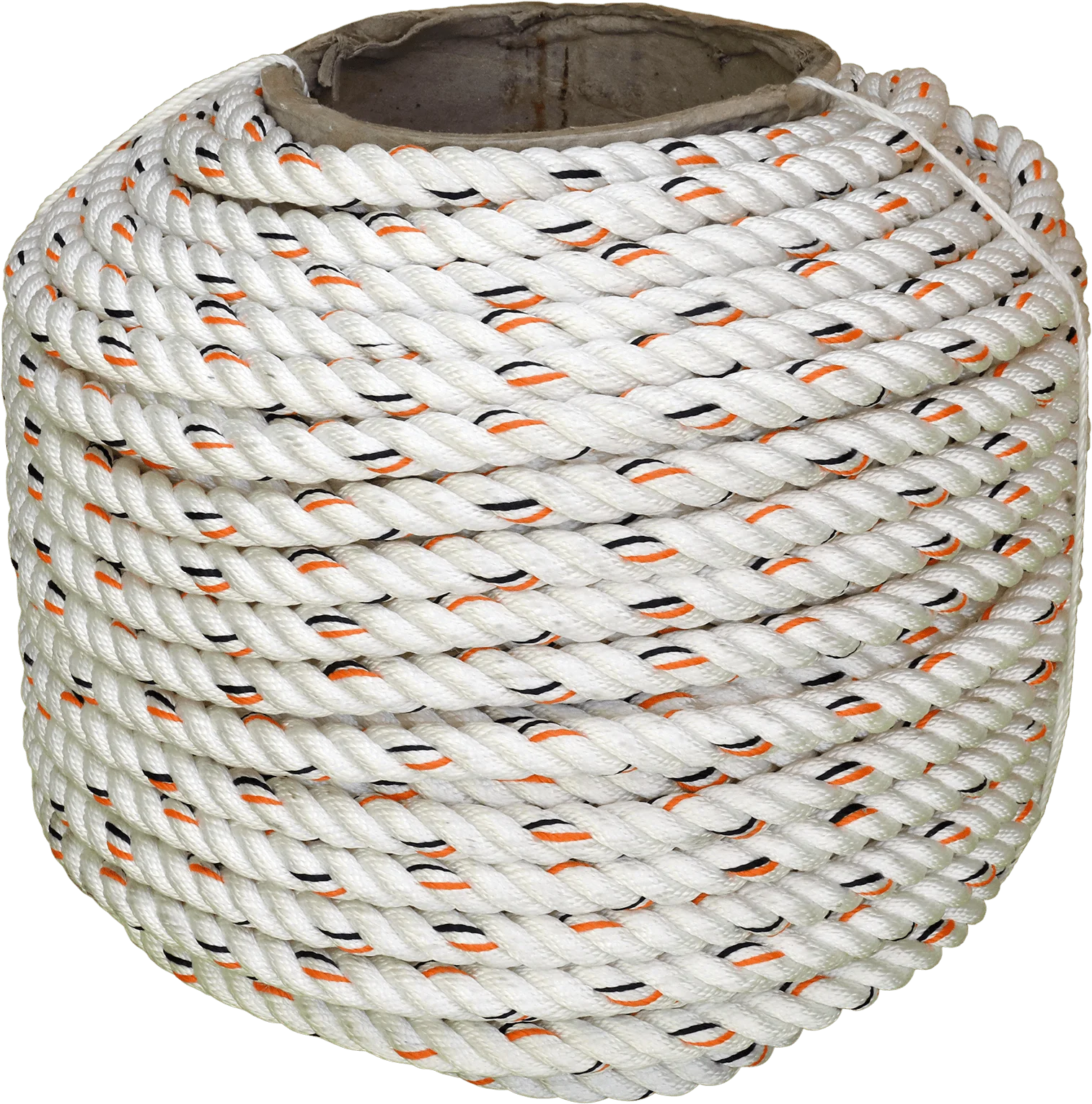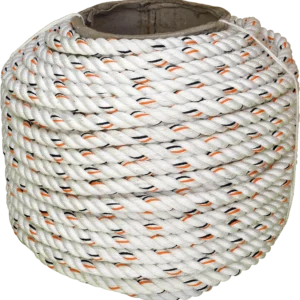Introduction
Life Line Twisted Rope have been around for centuries and remain the most common type of rope. They are created by taking individual fibers of natural or synthetic materials (such as cotton, nylon, or polyester) and twisting them together to form strands. These strands are then twisted together in the opposite direction to create the final rope. The number of strands used can vary depending on the desired strength and thickness of the rope.
GET IT NOW
What Is a Life Line Twisted Rope?
Polyamide twisted ropes, often referred to simply as nylon ropes, are popular choices for lifelines and various other applications due to their strength, flexibility, and durability. Here’s a breakdown of their key characteristics and why they are commonly used:
- Material: Polyamide is a synthetic polymer known for its resilience and resistance to abrasion, chemicals, and UV radiation. This makes it ideal for outdoor and marine applications where exposure to harsh elements is common.
- Twisted Construction: These ropes are made by twisting together multiple strands or fibers of polyamide. The twisting process imparts strength and resilience to the rope, allowing it to withstand heavy loads and sudden shocks without breaking.
- Strength: Polyamide twisted ropes have high tensile strength, meaning they can bear substantial weight without snapping. This makes them suitable for use as lifelines where safety and reliability are paramount.
- Flexibility: Despite their strength, nylon ropes remain flexible, allowing them to conform to the contours of objects they are tied around or used to secure. This flexibility makes them easy to handle and manipulate, particularly in challenging environments.
- Shock Absorption: Nylon ropes have some elasticity, which enables them to absorb shocks and impacts without sustaining damage. This property is crucial in applications where sudden forces or jerks may occur, such as in marine settings or during rescue operations.
- Resistance to Moisture: Polyamide ropes have inherent resistance to moisture, making them suitable for use in wet or humid conditions without compromising their strength or integrity. This makes them ideal for marine applications where exposure to water is inevitable.
- Longevity: Nylon ropes are known for their long lifespan and resistance to degradation over time. Properly maintained, they can last for years, providing reliable performance in various settings.
Key Features of Life Line Twisted Rope Lifelines
- Material: Twisted rope lifelines are typically made of 3-strand polyamide (nylon) fibers with a diameter of 14mm. Polyamide is chosen for its excellent strength, durability, and resistance to moisture and chemicals. This ensures that the lifelines can withstand the rigors of outdoor and industrial environments where exposure to harsh conditions is common.
- Construction: The twisting of individual strands of polyamide fibers creates a robust rope structure. This twisted construction imparts strength and resilience to the lifeline, allowing it to bear heavy loads and withstand sudden shocks. However, it’s essential to note that twisted ropes are more susceptible to abrasion compared to braided ropes due to their construction.
- Applications: Twisted rope lifelines serve various purposes, including as vertical lifelines, anchorage lines, and fall protection systems. They are commonly used in construction, industrial maintenance, and rescue operations where workers need reliable fall protection and secure anchorage points.
- Certification: When used with specific rope grab fall arresters or other compatible fall protection equipment, twisted rope lifelines can become part of a certified safety system. Certification ensures that the entire fall protection system meets industry standards and regulations for safety. It’s crucial to ensure compatibility between the lifeline and the associated fall protection equipment to guarantee proper functionality and effectiveness in the event of a fall.
Advantages
- Strength: Twisted nylon ropes are known for their exceptional strength. They can withstand heavy loads without breaking or stretching excessively, providing reliable support in various applications. This strength means that fewer ropes are needed to accomplish tasks that require substantial weight-bearing capabilities, reducing the overall cost of materials.
- Resistance: Twisted ropes are highly resistant to moisture, oil, grease, and most chemicals. This resistance ensures that they remain unaffected by rot and decay, even when used outdoors or in environments where exposure to harsh elements is common. Their ability to withstand these conditions means they require less frequent replacement, resulting in long-term cost savings.
- Longevity: Because of their durability and resistance to environmental factors, twisted nylon ropes have a longer lifespan compared to some other types of ropes. They can withstand harsh weather conditions, frequent use, and exposure to chemicals without deteriorating quickly. This longevity reduces the frequency of rope replacements, ultimately lowering maintenance and replacement costs over time.
- Cost-Effectiveness: Twisted nylon ropes are generally more cost-effective than some other specialized rope designs, such as braided or kernmantle ropes. While these specialized ropes may offer specific advantages in certain applications, they often come with a higher price tag due to their manufacturing processes and materials. Twisted ropes provide a balance of strength, durability, and resistance at a more affordable price point, making them a practical choice for many general-purpose applications.
Precautions and Maintenance
- Inspect Regularly: Regular inspection of twisted rope lifelines is essential to identify any signs of wear, fraying, or damage. Over time, exposure to harsh conditions, frequent use, and load-bearing activities can weaken the fibers of the rope, compromising its integrity. By inspecting the lifelines regularly, you can detect any issues early and replace compromised sections promptly, preventing accidents or failures during use.
- Avoid Abrasion: Twisted ropes, while strong, are more prone to abrasion compared to other rope designs. Abrasion can occur when the rope rubs against sharp edges or rough surfaces, causing the fibers to wear down and weaken. To avoid abrasion, it’s essential to handle the lifelines with care and avoid dragging them across abrasive surfaces. When using twisted ropes in environments with sharp edges or rough terrain, take precautions to protect the lifelines or consider using protective sleeves or guards to prevent damage.
- Storage: Proper storage is key to prolonging the lifespan of twisted ropes. Store the lifelines away from direct sunlight, as prolonged exposure to UV radiation can weaken the fibers over time. Additionally, avoid storing the ropes in areas with extreme temperatures or high humidity, as these conditions can accelerate deterioration. Instead, store the ropes in a cool, dry place away from sources of heat or moisture. Coiling the ropes neatly and hanging them on racks or hooks can help prevent tangling and minimize unnecessary strain on the fibers.
Conclusion
Life line twisted ropes serve a crucial purpose beyond mere cords; they represent lifelines safeguarding lives in various scenarios. Whether one is laboring at heights on construction sites or venturing into the wilderness for outdoor exploration, comprehending and respecting these ropes becomes paramount. These ropes aren’t just tools but conduits to safety, forming a vital link between individuals and potential hazards. By recognizing their significance, individuals can better appreciate the importance of proper handling, maintenance, and utilization. In essence, these lifelines symbolize a commitment to safety and preparedness, underscoring the importance of staying vigilant and connected to ensure the well-being of oneself and others. Ultimately, understanding the role of life line twisted ropes transcends their physical presence, emphasizing their indispensable role in preserving lives and promoting safety across various environments.


